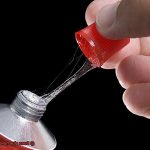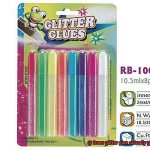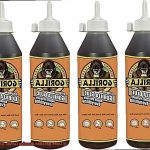Title: Glue: More Than Just Sticky Stuff – How Does it Affect the Environment?
Introduction:
Contents
- 1 What is Glue?
- 2 The Environmental Impact of Conventional Glues
- 3 Eco-Friendly Alternatives to Conventional Glues
- 4 How Can We Reduce the Environmental Impact of Glue?
- 5 The Role of Recycling in Reducing the Impact of Glue on the Environment
- 6 The Manufacturing Process and Its Effects on the Environment
- 7 The Benefits of Eco-Friendly Glues
- 8 Conclusion
Hey there, glue enthusiasts and eco-warriors. We all know that glue is like the superhero of sticking things together – saving broken vases and acing those school projects. But have you ever wondered if this magical adhesive has a dark side? I’m talking about its impact on our precious environment. With everyone going gaga over saving the planet, it’s time to dig deep into the world of glue and find out if it’s secretly causing harm to our delicate ecosystems. So, buckle up as we embark on a journey to unravel the truth behind this seemingly innocent sticky stuff. Prepare yourself for a wild ride of discovery because, my friend, glue might not be as harmless as it appears. Let’s get started.
What is Glue?
Glue is not just an ordinary substance; it is the adhesive that holds our world together, quite literally. From fixing broken toys to creating intricate art projects, glue is an indispensable tool in our arsenal. But have you ever wondered what exactly glue is made of? In this article, we will embark on a captivating exploration of the fascinating world of glue and its components.
The Science of Glue:
At its core, glue is all about adhesion – the remarkable ability to stick things together. The secret behind this adhesive power can be found in its formulation. Glue typically consists of three primary components: an adhesive agent, additives, and a delivery system.
Adhesive Agent:
The adhesive agent is the star player in the magical bonding properties of glue. It can be derived from natural sources like plants or animals, or it can be synthetically created in a laboratory. Commonly used adhesive agents include resin, rubber, and epoxy. Each of these agents possesses unique properties that make them suitable for different materials and applications.
Additives:
Glue wouldn’t be complete without its supporting cast of additives. Solvents play a crucial role by dissolving the adhesive agent, making it easier to apply. Thickeners give glue its desired consistency and prevent it from dripping. Preservatives extend the shelf life of glue, ensuring it remains usable for longer periods. Stabilizers maintain the adhesive properties over time, preventing it from losing its stickiness.
Delivery System:
Glue comes in various forms – liquid, gel, or solid – depending on its intended use. The delivery system determines how the glue is applied and how it interacts with different materials. Some glues require heat or pressure to activate their adhesive properties, while others simply require contact between surfaces.
Types of Glue:
Not all glues are created equal. There is a wide range of glues available, each tailored to specific applications and materials. Let’s explore a few commonly used types:
- Wood Glue: Specifically designed for bonding wood, this glue formulation provides a strong and durable bond.
- Fabric Glue: Ideal for repairing clothes or engaging in crafting projects, fabric glue can withstand washing while remaining flexible.
- Super Glue: Also known as cyanoacrylate adhesive, super glue bonds quickly and strongly, making it perfect for small repairs.
- Epoxy Adhesive: This two-part adhesive boasts incredible strength and versatility, making it suitable for a wide range of materials.

The Environmental Impact of Conventional Glues
Prepare to be amazed as we delve into the secret life of conventional glues and uncover their not-so-pretty environmental impact.
Petroleum-based Ingredients:
Conventional glues are made using petroleum-based chemicals like formaldehyde, toluene, and acetone. These ingredients contribute to air pollution during production and release harmful volatile organic compounds (VOCs) when in use. Say hello to respiratory problems and indoor air pollution.
Landfill Leaching:
Once we’re done with our gluing projects, those tubes and bottles end up in landfills where they can leach dangerous chemicals into the soil and groundwater. It’s a toxic time bomb ticking away, threatening ecosystems and wildlife.
Packaging Predicament:
Ever noticed how conventional glue packaging is often non-recyclable? Those tubes and containers add to the mounting waste problem. We need better alternatives that prioritize sustainability—recyclable or biodegradable packaging materials for the win.
Extraction and Manufacturing Woes:
Conventional glue production relies on petroleum extraction, contributing to habitat destruction and pollution from oil spills. The energy-intensive manufacturing process emits carbon emissions, fueling climate change even more.
Deforestation Dilemma:
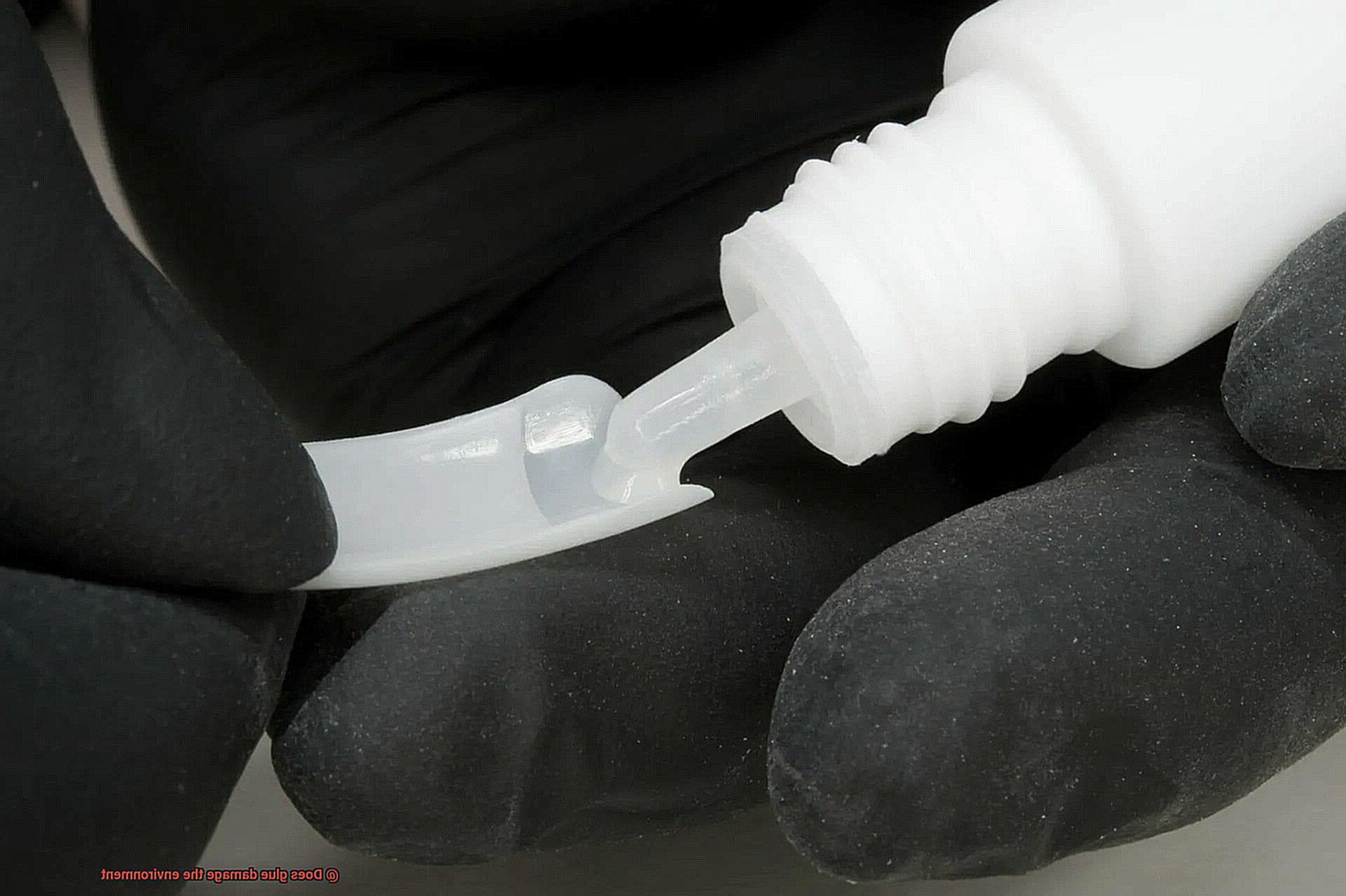
Guess what? Some adhesive ingredients come from tree resins or require wood products, potentially contributing to deforestation. We must protect our precious forests while still satisfying our glue needs.
Eco-Friendly Alternatives to Conventional Glues
Today, we’re diving into the fascinating world of eco-friendly alternatives to conventional glues. Let’s explore the benefits they bring to our environment and how they help us stick things together without sticking it to Mother Earth.
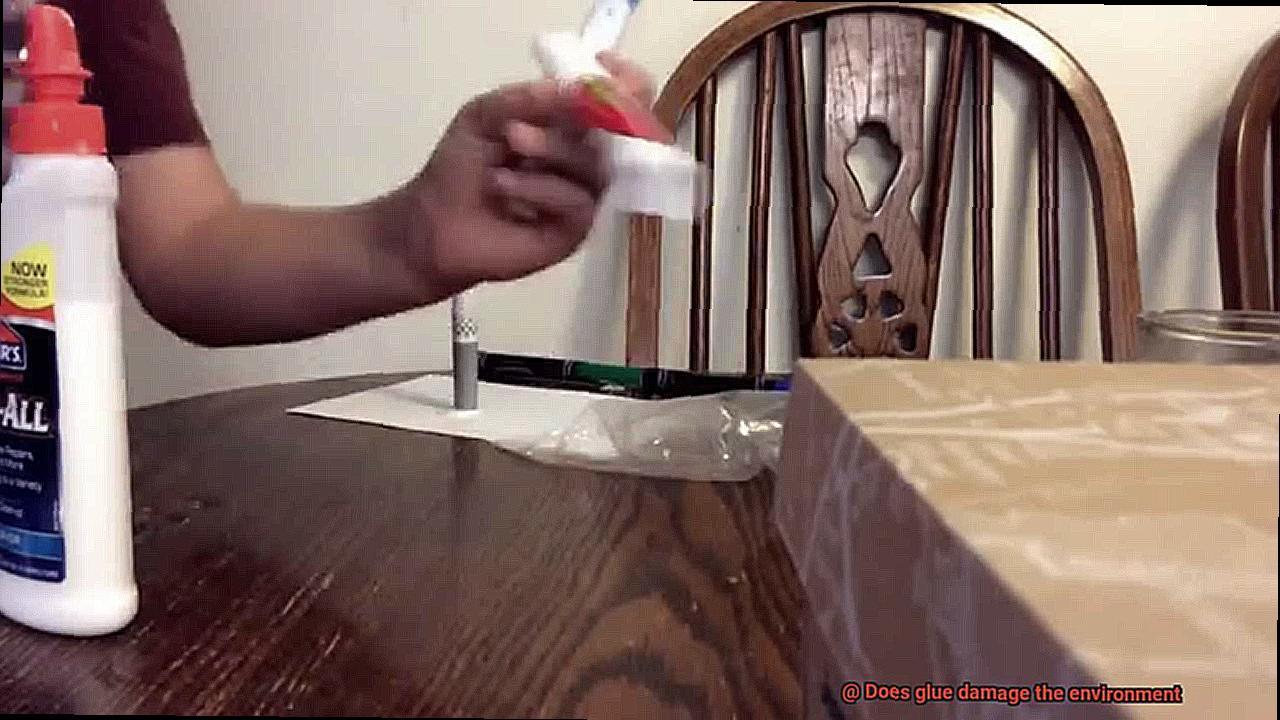
Plant-Based Adhesives:
Crafters and woodworkers adore plant-based adhesives. Made from natural materials like vegetable starch, soy, or tree resins, these glues are effective and biodegradable. Bid farewell to harmful toxins seeping into the soil and water systems.
Water-Based Glues:
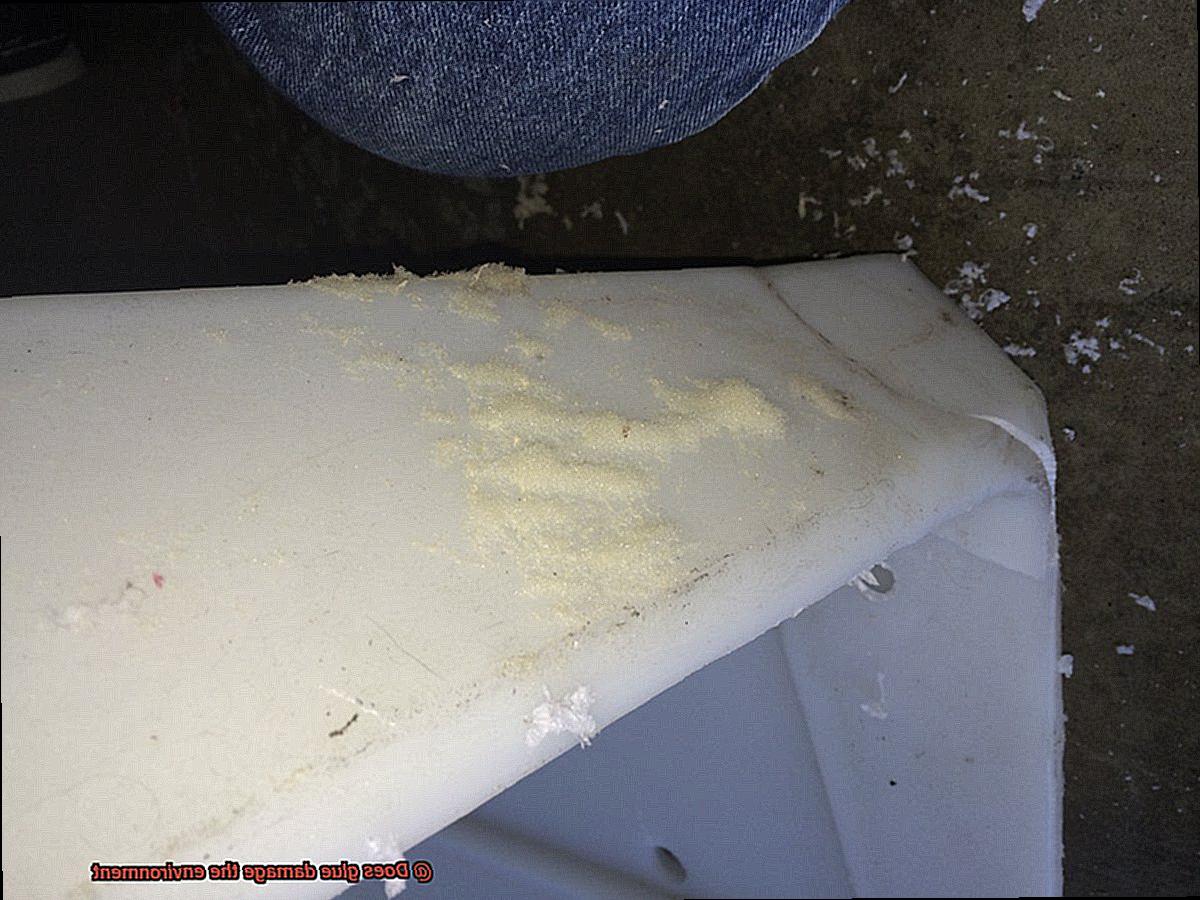
For low VOC content and no unpleasant fumes, turn to water-based glues. Mixed with natural polymers like cellulose or casein, they’re perfect for paper crafts, bookbinding, and packaging industries.
Biodegradable Glues:
When permanence isn’t necessary, opt for biodegradable glues. Made from starch, cellulose, or vegetable oils, these adhesives break down naturally over time without leaving harmful residues behind.
Recycled Glues:
Give a round of applause for recycled glues. Crafted from materials like paper or cardboard, they reduce waste and minimize environmental impact. Reusing what would end up in landfills makes a small but crucial difference.
Natural Adhesive Solutions:
Feeling adventurous? Dive into the world of DIY adhesive solutions using ordinary kitchen ingredients. Flour and water create a simple glue for paper crafts, while cornstarch mixed with water produces a thick paste-like adhesive. Who knew the pantry held such gluey secrets?
Conclusion:
By choosing eco-friendly alternatives to conventional glues, we can bond materials together without harming the environment. Plant-based adhesives, water-based glues, biodegradable options, recycled glues, and even natural adhesive solutions offer effective alternatives for a wide range of applications. Remember, it’s not just about using these sustainable alternatives; it’s also essential to dispose of adhesive containers correctly and avoid pouring excess glue down the drain.
How Can We Reduce the Environmental Impact of Glue?
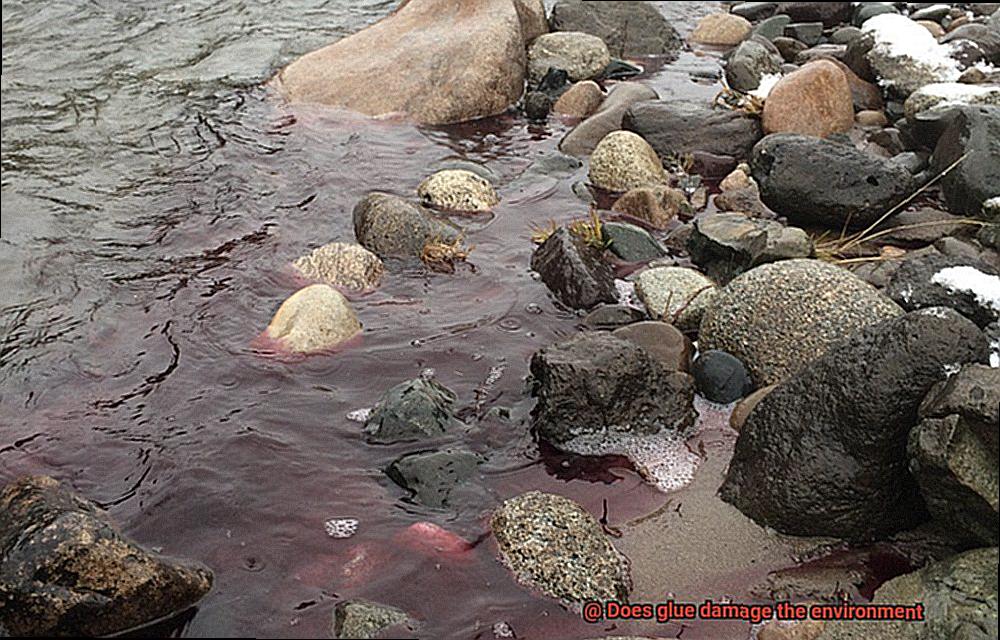
From harmful chemicals to waste accumulation, glue can leave a lasting mark on our planet. In this blog post, we will explore practical and effective ways to reduce the environmental impact of glue and make more eco-friendly choices.
Opt for Water-Based Glues:
Water-based glues are an excellent alternative to traditional solvent-based adhesives. These eco-friendly options use water as the primary solvent, minimizing the release of volatile organic compounds (VOCs) that contribute to air pollution. By choosing water-based glues, you not only protect the environment but also safeguard your health. These glues are readily available and suitable for various applications like crafting and woodworking.
Recycle and Dispose of Adhesive Waste Properly:
To prevent glue waste from piling up in landfills, it is crucial to recycle or dispose of adhesive containers correctly. Follow your local recycling guidelines for bottles and tubes. Additionally, if you have expired or leftover glue that cannot be used, dispose of them according to hazardous waste regulations to prevent environmental contamination. Proper disposal ensures that these materials are managed responsibly and do not harm our ecosystems.
Promote Sustainable Manufacturing Practices:
Encouraging glue manufacturers to adopt sustainable manufacturing practices is a significant step towards reducing the environmental impact of glue. Look for companies that prioritize environmentally-friendly practices when purchasing glue. Some sustainable manufacturing practices include using renewable or recycled materials in glue formulations, implementing energy-efficient production processes, and minimizing waste generation. By supporting these companies, you send a message that sustainability matters.

Educate Yourself and Others:
Knowledge is power. Educate yourself about the potential ecological consequences of certain adhesives so you can make informed choices when buying glue products. Spread awareness among friends, family, and colleagues about eco-friendly alternatives and their benefits. By creating a demand for greener options, we can inspire manufacturers to invest in more environmentally-friendly adhesives. Together, we can drive positive change and protect our planet.
The Role of Recycling in Reducing the Impact of Glue on the Environment
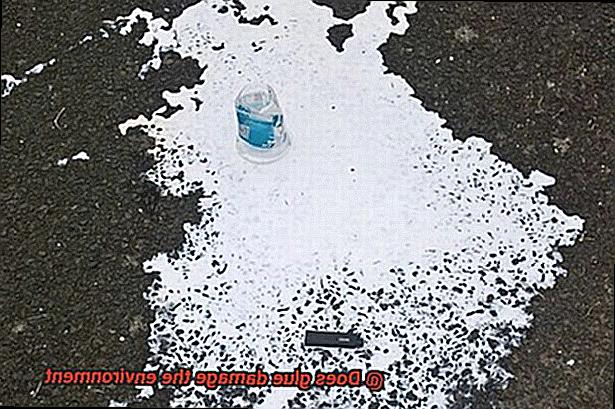
Well, get ready for a deep dive into the fascinating world of glue and discover how recycling can play a crucial role in reducing its environmental footprint. From production to disposal, every step matters when it comes to preserving our planet. Let’s explore.
The Problem: Glue and the Environment:
Glue is often made from synthetic materials derived from fossil fuels, contributing to greenhouse gas emissions and depleting natural resources. Improper disposal practices can lead to glue ending up in landfills or waterways, causing detrimental effects on the environment and wildlife.
The Solution: Recycling Glue:
Recycling comes to the rescue. By recycling glue containers and related materials, we can prevent them from polluting our soil and water. The process involves separating plastic components from labels or caps and cleaning them for reuse or processing into new products. This reduces the need for virgin plastic production and conserves energy and resources.
Not All Glues Are Created Equal:
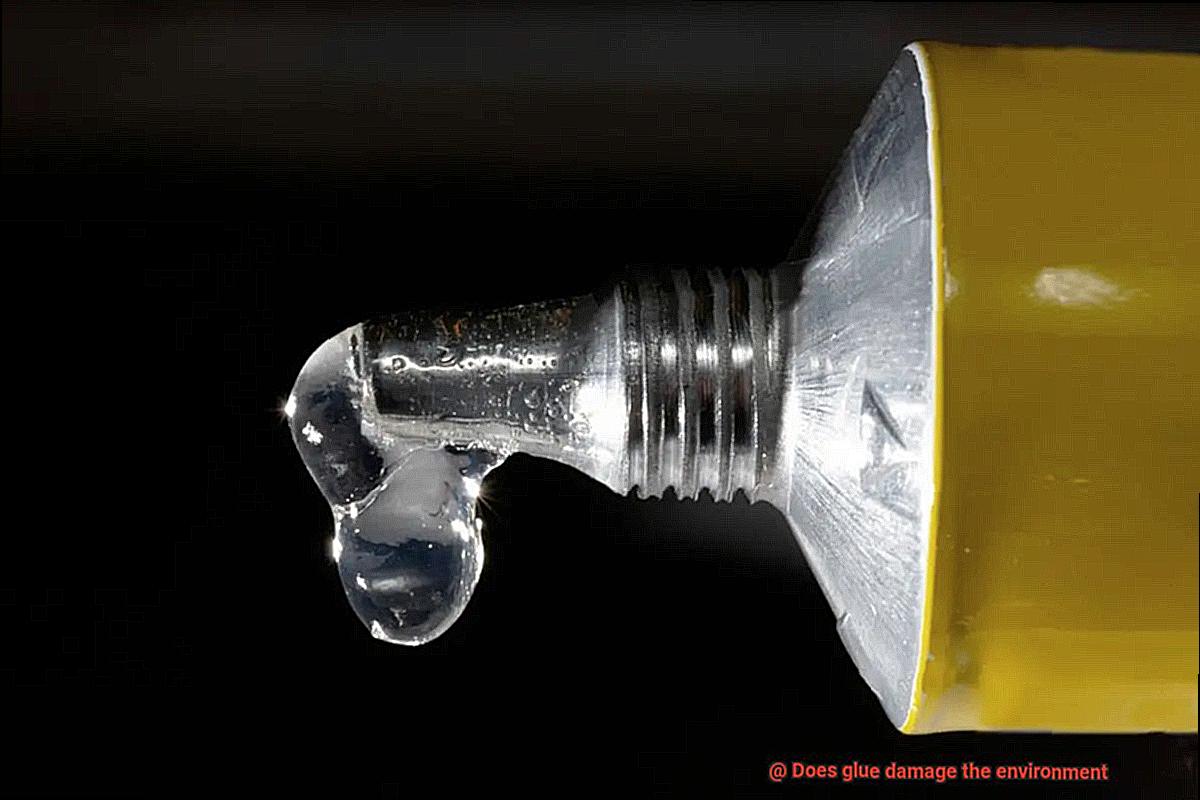
Some glues contain toxic chemicals or have complex compositions that make them difficult to recycle. In these cases, proper disposal methods should be followed to minimize harm. Choosing eco-friendly alternatives like water-based glues or adhesive tapes can also reduce our overall consumption of glue and make a more sustainable choice.
Education and Collaboration for a Greener Future:
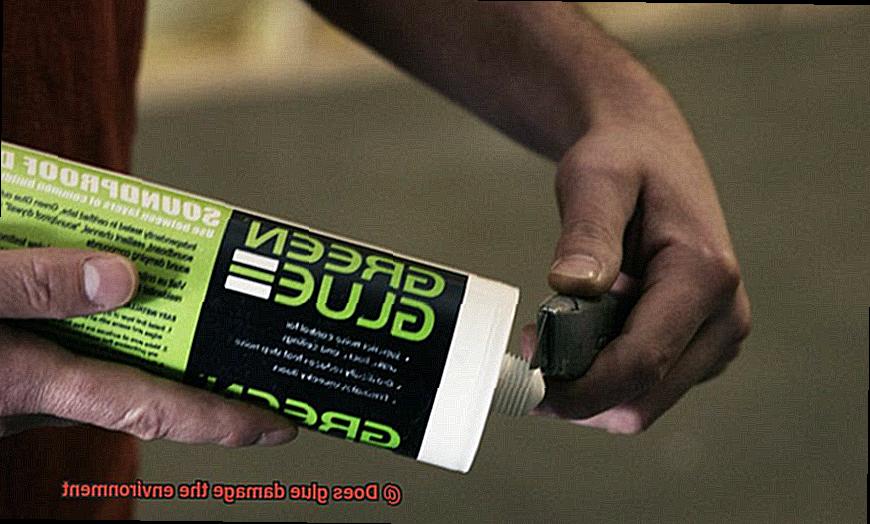
Raising awareness about the environmental impact of glue is crucial. Promoting recycling programs and providing convenient recycling options encourages responsible disposal practices. Collaboration between manufacturers, recyclers, and consumers is key in establishing effective recycling systems for glue and its packaging materials.
The Manufacturing Process and Its Effects on the Environment
Let’s take a deep dive into the captivating world of glue production and uncover its profound effects on our planet.
The manufacturing process of glue involves a complex mixture of chemicals, solvents, and resins. These materials are often sourced from non-renewable resources like crude oil or natural gas, setting off a chain reaction with detrimental consequences for the environment. The extraction and processing of these raw materials lead to habitat destruction, water pollution, and air pollution. Imagine the devastation caused by crude oil extraction – fragile ecosystems disrupted, bodies of water contaminated, and the air filled with harmful pollutants. Similarly, the production of natural gas releases greenhouse gases and other pollutants into the atmosphere, exacerbating climate change.
Once the raw materials are obtained, they undergo refining processes to develop the adhesive properties required for glue. These refining techniques, such as distillation, polymerization, and emulsification, demand copious amounts of energy derived from fossil fuels. As a result, greenhouse gas emissions skyrocket while air pollution levels surge.
But that’s not all – the manufacturing process generates waste and byproducts that pose further risks to our environment. Hazardous chemicals, volatile organic compounds (VOCs), and other pollutants are often produced as a result. If these waste materials are not disposed of properly, they can contaminate soil, water sources, and the air we breathe. The consequences are grim – threats to human health and the delicate balance of ecosystems.
To compound matters, manufacturers may add additional additives or ingredients to enhance glue performance or durability. Unfortunately, some of these additives can be toxic or harmful to both humans and the environment. Take plasticizers like phthalates as an example – they have been linked to adverse health effects and persist in our environment long after their use.
So how can we combat these detrimental impacts? Manufacturers can adopt sustainable practices such as utilizing renewable raw materials, implementing energy-efficient technologies, reducing waste through recycling and reuse, and incorporating less toxic additives. As conscientious consumers, we also play a critical role by opting for environmentally-friendly glue options made from renewable or biodegradable materials that have minimal environmental impacts throughout their life cycle.
The Benefits of Eco-Friendly Glues
In this blog post, we’ll explore the numerous benefits of these adhesive superheroes, from reducing carbon footprints to protecting human health. So, if you’re eager to learn more about the glue revolution, stick around.
Lower Carbon Footprint:
Eco-friendly glues are formulated with non-toxic ingredients like plant-based resins or vegetable starches, unlike traditional glues that often contain volatile organic compounds (VOCs) contributing to air pollution and climate change. By using natural alternatives, you can significantly reduce your carbon footprint and contribute to a healthier planet.
Safer for You and Me:
Eco-friendly glues made from natural ingredients eliminate toxic substances found in traditional glues, reducing risks to human health, especially in poorly ventilated areas. Bid adieu to allergies and respiratory issues with these safer alternatives.
Biodegradability:
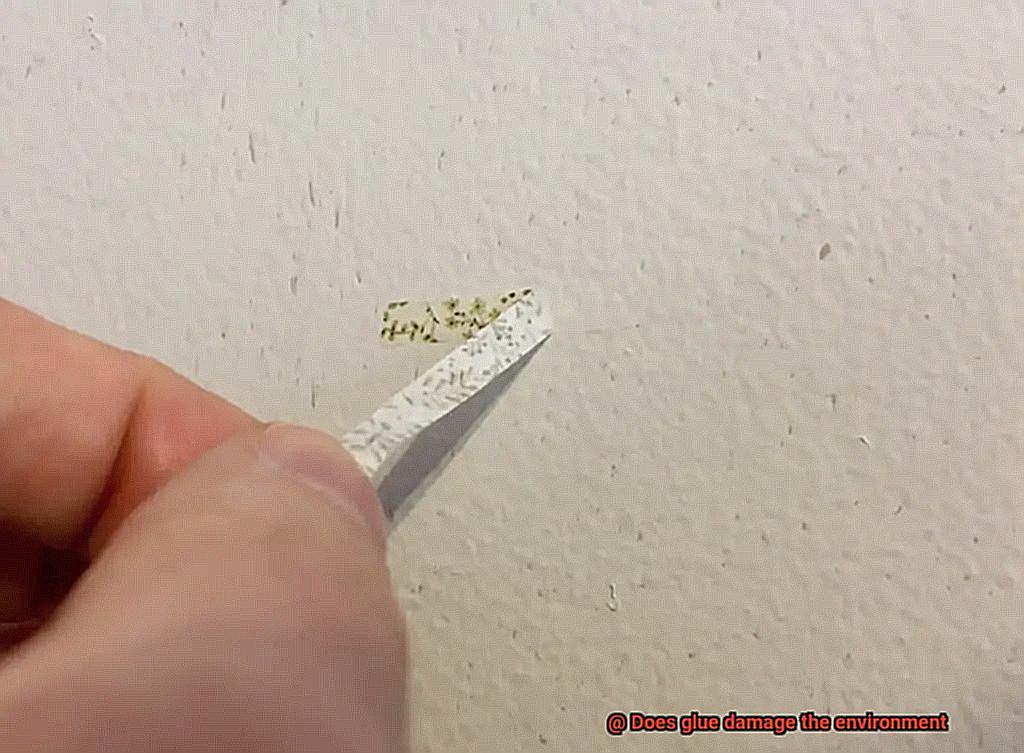
Eco-friendly glues are our allies in the fight against landfill waste. Unlike conventional glues that are difficult to recycle due to their chemical composition, these glues are biodegradable. Microorganisms naturally break them down, minimizing environmental impact and promoting a sustainable approach to crafting and manufacturing.
A Variety of Options:
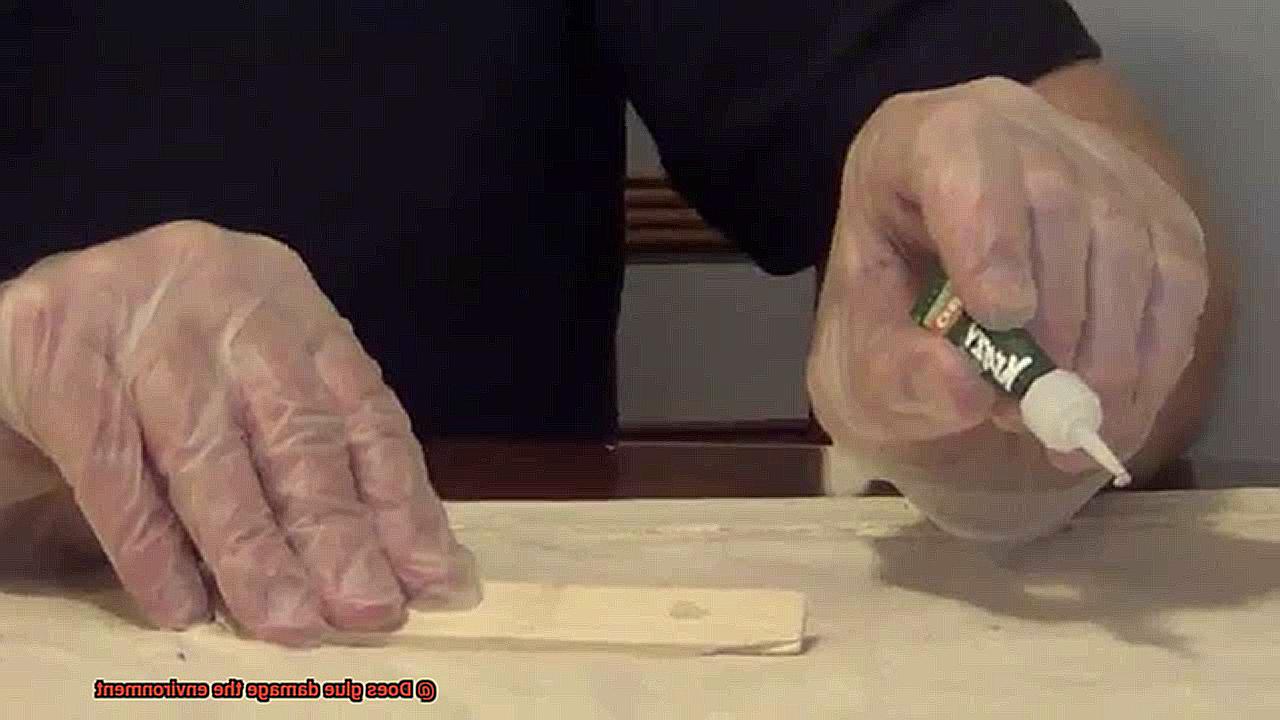
Today, there is a plethora of eco-friendly glue alternatives available in the market. From water-based adhesives to soy-based formulas, these alternatives offer comparable strength and versatility while being kinder to the environment. Some even come in recyclable or biodegradable packaging, making them a win-win for sustainability enthusiasts.
Supporting a Greener Future:
Choosing eco-friendly glues supports the growing demand for sustainable products. As consumers become more conscious of their ecological footprint, the demand for environmentally friendly alternatives rises. By embracing the glue revolution, you contribute to a greener and more sustainable future.
cITuKremX9A” >
Conclusion
To sum up, glue wreaks havoc on the environment. Traditional glues, packed with petroleum-based ingredients, not only spew out air pollution during production but also release toxic volatile organic compounds (VOCs) when used. As if that’s not enough, these glues contaminate landfills by leaching dangerous chemicals into the soil and groundwater from their non-recyclable containers. And let’s not forget about the waste problem caused by their packaging or the habitat destruction, oil spills, and carbon emissions associated with their extraction and manufacturing processes.
But fear not. There are eco-warrior alternatives at our disposal that can help mitigate the environmental damage inflicted by glue. Think plant-based adhesives, water-based glues, biodegradable options, recycled glues, and natural adhesive solutions. These bad boys offer effective substitutes for a wide range of applications without causing harm to Mother Earth.
To go even further in our quest to save the environment from glue-induced chaos, it is crucial to opt for water-based glues that minimize volatile organic compound (VOC) emissions. Properly disposing of adhesive waste is also key to prevent ecosystems from being contaminated. And let’s not forget about supporting companies that prioritize environmentally-friendly practices – they deserve our applause.
Education and awareness are powerful weapons in this battle against glue’s environmental destruction. By educating ourselves about eco-friendly alternatives and spreading the word among others, we can create a demand for greener options and inspire manufacturers to invest in more environmentally-friendly adhesives.
Recycling is another crucial player in reducing glue’s impact on our precious planet. By diligently recycling glue containers and related materials, we can keep them from polluting our soil and water systems. So let’s join forces – manufacturers, recyclers, and consumers – to establish effective recycling systems for glue and its packaging materials.
In conclusion, let’s make smart choices and embrace eco-friendly alternatives to minimize the environmental damage caused by glue.


